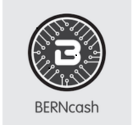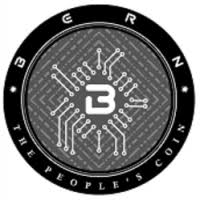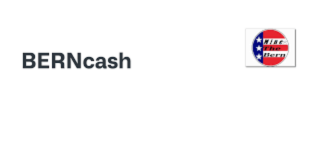BERNcash (BERN): A P2P Crypto Inspired by Political Advocacy
Table of Contents

BERNcash is a Mineable Token. Are you curious about expanding your crypto portfolio with other mineable tokens or alternative coins? At Niftyfinances, you’ll find in-depth information, guides, and the latest updates on various promising crypto projects. Whether you’re a miner or an enthusiast looking for unique opportunities, Niftyfinances is your go-to platform to discover what’s next in decentralized finance!
Launched in 2016, BERNcash (BERN) is a peer-to-peer cryptocurrency created to facilitate instant payments with low fees, inspired by political advocacy. Named after presidential candidate Bernie Sanders, BERNcash aimed to provide a decentralized platform for political contributions and transactions. This article delves into the workings of BERN, its mining process, benefits, and guidance on purchasing and storing the currency securely.

What is BERNcash (BERN)?
BERNcash (BERN) is a decentralized cryptocurrency launched in 2016 that combined Proof-of-Work (PoW) and Proof-of-Stake (PoS) to secure its network. It was designed as a lightweight and fast digital currency, aiming to provide low-cost transactions and passive income opportunities through staking.
- Hybrid Consensus Mechanism – Utilized both PoW and PoS in its early stages, allowing miners and stakers to participate in securing the network.
- Low Transaction Fees – Designed to offer cost-efficient payments compared to traditional financial systems.
- Staking Rewards – Users could earn passive income by staking BERN in their wallets.
- Decentralized & Community-Driven – No central authority controlled BERN, and its development relied on the community.
BERNcash (BERN) Market Performance and Current Status
- Initial Growth (2016-2017): Gained traction in the crypto space with a small but active community.
- Peak & Volatility: Saw speculative trading activity but struggled to maintain high liquidity.
- Decline & Inactivity: Over time, a lack of development updates and exchange delistings led to a sharp decline in trading activity.
Origins in 2016 During the U.S. Presidential Campaign
BERNcash (BERN) was launched in 2016, inspired by the political movement surrounding U.S. Senator Bernie Sanders’s presidential campaign. The cryptocurrency’s name and branding reflected the grassroots enthusiasm that emerged during that election cycle.
Motivation to Support Political Contributions Through Cryptocurrency
One of the key motivations behind BERN was to provide a decentralized and censorship-resistant way for supporters to make political donations without relying on traditional banking systems. The developers aimed to:
- Reduce reliance on centralized financial institutions that could restrict political funding.
- Enable fast and low-cost transactions for donations and community-driven initiatives.
- Promote financial independence by allowing users to hold and transfer funds without third-party oversight.
Despite its goal of being used for political contributions, BERN never gained mainstream adoption for this purpose, as most political campaigns preferred established payment methods.
Development Milestones and Community Engagement
BERNcash started with a hybrid Proof-of-Work (PoW) and Proof-of-Stake (PoS) system, allowing users to either mine or stake their coins. Key milestones included:
- 2016: Launch of BERN with an emphasis on political activism and decentralized transactions.
- 2017-2018: Transition towards staking-based rewards, making it more attractive for long-term holders.
- Community Engagement: The project had a small but active community that supported staking and promoted BERN on social media and crypto forums.

How BERNcash (BERN) Works
BERNcash (BERN) is a decentralized cryptocurrency designed to facilitate secure and efficient transactions while providing users with opportunities to participate in network security and earn rewards. Below is an overview of how BERN operates.
1. Peer-to-Peer Payment System Enabling Instant Transactions
BERNcash functions as a peer-to-peer (P2P) payment network, allowing users to send and receive transactions directly without relying on intermediaries like banks or payment processors. This system offers several advantages:
- Instant Settlements: Transactions are processed quickly, enabling near-instant payments.
- Global Accessibility: Anyone with an internet connection can use BERN, regardless of geographical restrictions.
- No Third-Party Control: Users have full control over their funds, reducing the risk of account freezes or censorship.
2. Low Transaction Fees Compared to Traditional Payment Methods
Traditional financial systems often impose high fees for wire transfers, credit card transactions, and international payments. BERNcash minimizes these costs through its blockchain technology:
- Minimal Fees: Transactions on the BERNcash network are processed at a fraction of the cost of traditional banking systems.
- Cost-Effective for Micropayments: The low fees make BERN ideal for small transactions, such as tipping, donations, and everyday purchases.
- No Hidden Charges: Unlike credit card companies and banks, BERN does not impose additional service fees.
3. Integration of Proof-of-Work (PoW) and Proof-of-Stake (PoS) Mechanisms
BERNcash employs a hybrid consensus model that combines Proof-of-Work (PoW) and Proof-of-Stake (PoS), ensuring a balanced approach to security and sustainability.
- Proof-of-Work (PoW):
- Miners solve complex cryptographic puzzles to validate transactions and add new blocks to the blockchain.
- This mechanism enhances network security by preventing fraudulent transactions and double-spending.
- However, PoW mining requires significant computational power and energy consumption.
- Proof-of-Stake (PoS):
- Users who hold and stake BERN tokens can participate in securing the network.
- Stakers receive rewards in the form of additional BERN tokens, encouraging long-term holding.
- This method is more energy-efficient than PoW, reducing the environmental impact of blockchain operations.
The integration of both PoW and PoS allows BERNcash to maintain network security while offering users the ability to earn passive income through staking.
BERNcash leverages a fast, low-cost, and decentralized payment system, making it a viable alternative to traditional financial networks. By integrating both PoW and PoS, BERNcash achieves a balance between security and efficiency, ensuring a sustainable and user-friendly cryptocurrency experience.

Mining and Staking BERNcash (BERN)
1. Explanation of the Hybrid PoW/PoS Model
BERNcash (BERN) initially operated on a hybrid consensus mechanism, combining Proof-of-Work (PoW) and Proof-of-Stake (PoS). This dual approach ensured:
- PoW for Early Distribution – Miners secured the network and earned BERN rewards for validating transactions.
- PoS for Long-Term Sustainability – Holders of BERN could stake their coins to earn passive rewards while contributing to network security.
Over time, the network transitioned to being more PoS-focused, reducing reliance on energy-intensive mining.
2. Requirements for Mining BERN Tokens
During its PoW phase, BERNcash used a Scrypt-based mining algorithm, similar to Litecoin (LTC). To mine BERN, users need:
- Mining Hardware:
- GPU (Graphics Processing Unit) – Mid-range to high-end GPUs were commonly used.
- ASIC (Application-Specific Integrated Circuit) – Some Scrypt ASIC miners were compatible, offering higher efficiency.
- Mining Software:
- CGMiner or BFGMiner for ASIC devices.
- CCMiner or SGMiner for GPU-based mining.
- Mining Pools:
- Since solo mining was inefficient, users typically joined BERN-supported mining pools to combine computing power and share rewards.
However, as the network shifted towards PoS, mining rewards decreased, making staking a more viable option.
3. Staking Process and Earning Rewards Through PoS
With Proof-of-Stake, BERN holders could stake their coins to earn passive income while helping validate transactions. The staking process involved:
- Downloading a BERN-compatible wallet (such as the official BERNcash wallet).
- Holding a minimum balance in the wallet to participate in staking.
- Keeping the wallet online and connected to the network to validate transactions.
- Earning staking rewards based on the amount of BERN held and the length of time staked.
The more BERN a user staked, the higher the probability of being chosen to validate transactions and receive staking rewards.
4. Comparison of Mining and Staking Benefits
| Energy Consumption | High (requires electricity for hardware) | Low (only requires a wallet to be online) |
| Equipment Cost | Expensive (GPU/ASIC needed) | None (only requires coins in a wallet) |
| Profitability | Dependent on mining difficulty and power costs | Based on the amount of BERN staked |
| Network Security Contribution | Miners validate transactions and secure the blockchain | Stakers secure the network by participating in consensus |
| Accessibility | Requires specialized hardware and mining pools | Open to anyone holding BERN |
While mining played a role in BERNcash’s early distribution, staking became the preferred method for securing the network and earning passive rewards. However, as development and community support declined, both mining and staking became unprofitable due to a lack of network activity and exchange support.
Benefits of Using BERNcash (BERN)
1. Facilitates Anonymous Political Donations
One of BERNcash’s original goals was to provide a private and censorship-resistant method for making political contributions. Key advantages included:
- Anonymity – Transactions could be conducted without revealing personal banking details.
- Censorship Resistance – Unlike traditional financial institutions, which may block or restrict political donations, BERNcash allows unrestricted peer-to-peer transfers.
- Global Accessibility – Supporters from anywhere in the world could contribute without going through intermediaries.
However, despite these benefits, BERNcash never gained mainstream adoption for political donations due to regulatory concerns and a lack of campaign integrations.
2. Decentralized Platform Reducing Reliance on Traditional Banking Systems
BERNcash operated on a fully decentralized blockchain, removing the need for banks or payment processors. This provided users with:
- Full control over funds – No third-party entity could freeze or limit access to BERN holdings.
- Borderless Transactions – Payments could be sent and received without geographical restrictions.
- Lower Costs – Without banks or credit card fees, transactions were significantly cheaper.
This made BERNcash an attractive alternative for users seeking financial independence and reduced reliance on centralized institutions.
3. Potential for Earning Rewards Through Staking
As a Proof-of-Stake (PoS) cryptocurrency, BERNcash offered staking rewards to users who held and secured the network. Benefits of staking included:
- Passive Income – Users earned rewards simply by holding BERN in a staking wallet.
- Eco-Friendly Alternative to Mining – Unlike Proof-of-Work (PoW) cryptocurrencies, PoS requires minimal energy consumption.
- Encouraged Long-Term Holding – Staking helped stabilize the network by incentivizing users to keep their coins rather than sell them.
However, as network activity declined, staking rewards became less valuable due to lower liquidity and exchange support.
4. Community-Driven Development and Support
BERNcash was initially supported by an active community, which played a role in:
- Promoting adoption through grassroots marketing.
- Providing technical support to new users.
- Participating in governance decisions to guide the project’s direction.
How to Buy and Store BERNcash
BERNcash (BERN) is a peer-to-peer cryptocurrency designed to facilitate instant payments with minimal fees. Named after presidential candidate Bernie Sanders, it enables users to support political causes and engage in secure transactions.
Exchanges Listing BERNcash
As of 2025, BERNcash is primarily available on the YoBit exchange. This platform allows users to trade BERN with various pairs, including USD. It’s important to note that trading volumes for BERNcash are relatively low, which may impact liquidity.
Step-by-Step Guide to Purchasing BERN Tokens
- Create an Account on YoBit: Visit the YoBit website and sign up for an account by providing the necessary information and completing any required verification processes.
- Deposit Funds: Once your account is set up, deposit funds into your YoBit account. This can typically be done using cryptocurrencies like Bitcoin (BTC) or Ethereum (ETH).
- Navigate to the BERN Trading Section: After funding your account, go to the trading section and search for the BERN trading pair that matches your deposited currency (e.g., BERN/BTC).
- Place a Buy Order: Enter the amount of BERN you wish to purchase and set your desired price. Review the details carefully before confirming the transaction.
- Withdraw Your BERN Tokens: For enhanced security, it’s advisable to transfer your BERN tokens from the exchange to a personal wallet.
Recommendations for Secure Wallets Compatible with BERN
Storing your BERN tokens in a secure wallet is crucial to protect your assets. While specific hardware wallet support for BERNcash may be limited, the official BERNcash wallet is available for download. This wallet offers features like in-wallet mining and is compatible with various operating systems.
Best Practices for Safeguarding Your Cryptocurrency Assets
- Use Hardware Wallets: Whenever possible, store your cryptocurrencies in hardware wallets, as they provide an extra layer of security by keeping your private keys offline.
- Enable Two-Factor Authentication (2FA): Activate 2FA on all your exchange and wallet accounts to add security measures against unauthorized access.
- Regularly Update Software: Keep your wallets and related applications up to date to benefit from the latest security enhancements.
- Be Cautious of Phishing Attempts: Always verify the authenticity of websites and emails related to your cryptocurrency activities to avoid falling victim to phishing scams.
- Backup Your Wallet: Ensure you have secure backups of your wallet’s private keys or seed phrases in case of device failure or loss.
By following these guidelines, you can effectively purchase and securely store your BERNcash tokens, contributing to a safer cryptocurrency experience.
Challenges and Future Outlook of BERNcash (BERN)
As BERNcash (BERN) continues to develop as a cryptocurrency with a focus on facilitating political donations and decentralized payments, it faces several challenges while also holding potential for future growth. Below is an analysis of key obstacles and opportunities for BERNcash moving forward.
Challenges
1. Regulatory Considerations for Political Donations via Cryptocurrency
One of the primary concerns surrounding BERNcash is the legal and regulatory landscape governing cryptocurrency-based political contributions.
- Compliance with Election Laws: Many countries have strict regulations on political donations, requiring transparency in donor identities and transaction tracking, which conflicts with BERNcash’s anonymous nature.
- Concerns Over Illicit Financing: Governments and regulatory bodies may scrutinize crypto donations due to fears of money laundering, foreign interference, or untraceable funds being used in elections.
- Potential for Policy Shifts: Laws and regulations on cryptocurrency contributions are still evolving, which could impact the future usability of BERNcash in political campaigns.
2. Adoption Hurdles Within Political Organizations and Donors
Despite the benefits of BERNcash for political fundraising, adoption faces several obstacles:
- Lack of Awareness and Understanding: Many political organizations and donors may not be familiar with how cryptocurrencies work or their advantages over traditional funding methods.
- Volatility Concerns: The fluctuating price of BERNcash could create uncertainty for candidates and organizations relying on crypto donations.
- Trust Issues: Some political figures and donors may be hesitant to adopt cryptocurrency due to its association with market speculation and potential regulatory risks.
Future Outlook
3. Technological Advancements and Potential Upgrades
For BERNcash to remain competitive and relevant, continuous development is necessary. Potential improvements include:
- Enhanced Privacy Features: Implementing advanced cryptographic techniques, such as zero-knowledge proofs, could allow for anonymous transactions while maintaining regulatory compliance.
- Scalability Solutions: Upgrades such as second-layer payment networks (similar to Bitcoin’s Lightning Network) could improve transaction speed and reduce costs.
- Improved Wallet and Staking Mechanisms: User-friendly interfaces, enhanced security measures, and staking enhancements could attract more users and investors to BERNcash.
4. Predictions for BERNcash’s Role in Future Political Campaigns
Looking ahead, BERNcash could play an increasing role in political funding and grassroots movements:
- Decentralized Crowdfunding for Candidates: BERNcash could provide an alternative to traditional fundraising, allowing supporters to donate globally with fewer restrictions.
- Integration with Blockchain-Based Voting Systems: If blockchain voting gains traction, cryptocurrencies like BERNcash could become integral to secure, transparent, and verifiable election processes.
- Greater Institutional Acceptance: As cryptocurrency regulations become clearer and more political organizations explore digital assets, BERNcash could see wider adoption in campaigns and activism.
While BERNcash faces regulatory and adoption challenges, its potential as a privacy-focused, decentralized funding tool is significant. Future advancements in blockchain technology and increasing acceptance of cryptocurrencies in political spheres could position BERNcash as a valuable asset for campaign financing and decentralized governance.
BERNcash (BERN) represents an innovative approach to merging cryptocurrency technology with political advocacy, offering a decentralized method for supporting political causes. Understanding its operational framework, benefits, and acquisition methods provides valuable insights for individuals interested in the intersection of digital currencies and political contributions. As the political landscape evolves, BERNcash may serve as a model for future endeavors aiming to integrate finance and political support in the digital age.